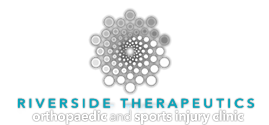Physiotherapy for Lower Back Pain
Over 80% of the population will suffer from lower back pain at one point in their lifetime. Back pain can start suddenly or develop gradually over time and sometimes last for up to six weeks (initially called “acute low back pain”). When symptoms last more then three months, the condition is considered “chronic”.
Fortunately, the most common cause of low back pain is a stretched or torn muscle and/or ligament.
A Muscle Strain occurs when the structure of the muscle is stretched too far becomes lengthened or maybe even tear
A Ligament Sprain happens when overstretching occurs to the point it either affects or tears the ligament.
Signs and symptoms of back pain can include:
- Muscle aches
- Limited flexibility or loss of movement in your back
- Shooting or stabbing pain with movement, lifting, or coughing
- Radiating pain down your leg (“sciatica”) with or without tingling and numbness
Common causes of sprain and strain of the lower back include:
- Lifting something improperly or awkwardly
- Sudden movements that place too much stress on the low back (for instance: a stumble or an awkward fall)
- Poor postural alignment (repetitive or prolonged strain)
- Prolonged/Repetitive work related positions or activities (for instance: deskwork, driving or heavy lifting)
- Sports injuries (excessive twisting, impact or contact)
Common conditions that can result in low back pain
Herniated (Bulged) Disc
The jelly-like center of a lumbar disc can push through the outer layer of the disc and, if large enough, compress a nearby nerve root causing an inflammatory response and pain radiating down the leg called: “Sciatica”.
Degenerative Disc Disease – This generally does not occur from a sudden injury or trauma as while the discs age over time, they start to dry out somewhat becoming thinner and gradually start developing small tears indirectly causing pain and/or disc herniation. Degeneration of the disc can lead to its thickness collapsing, compromising space for neural or circulatory tissues and so contribute to “stenosis” (see below) and pain.
Facet Joint Dysfunction – Each spinal segment has two facet joints on the left and on the right side of the vertebra. Both joints are covered with cartilage and surrounded by ligaments. As each joint and the disc are connected by the same bony segment (vertebra); movement or dysfunction in one structure will affect the functioning of the other structure. When irritated or inflamed, these joints or ligaments can cause pain.
Osteoarthritis – This condition results from wear and tear of the facet joints. It causes pain, inflammation, instability, and can occur at a single level or several levels of the spine. Spinal osteoarthritis is associated with aging and progresses over time.
Stenosis – When degenerative changes in the disc or facet-joints encroach into the spinal canal, they can eventually decrease the space for the nerve or the spinal cord. This can then lead to neural compression and pain (down the leg or arm).
Central stenosis – when the encroachment is within the central spinal canal, potentially compressing the spinal cord. This can lead to symptoms into both legs: altered sensation, loss of balance or coordination and/or weakness. If bowel/bladder function is affected urgent medical attention (E.R.) is needed.
Lateral stenosis – when the encroachment is within the neural foramen, potentially compressing the nerve-root. This generally leads to symptoms into one leg: pain (sciatica), pins and needles, numbness and/or weakness.
Spondylolysis / Spondylolisthesis – This condition occurs when the vertebra is exposed to excessive stress, allowing slippage between the vertebrae. The most common type is a fracture of the bony bridge between the facet joints (pars) or mechanical instability of the facet joints (degenerative).
Pain can be caused by joint instability (back) or compression of the nerves (leg).
Physiotherapy Treatment
Physiotherapy management of the above conditions has scientifically been proven to be helpful in relieving pain, speeding up recovery, and rehabilitating chronic issues. Treatment can include a combination of education, self-care management, manual or manipulative techniques, modalities and exercise therapy.
A registered physiotherapist can conduct a skilled clinical assessment of the spinal kinetics and recommend the appropriate and most effective treatment. For most back pain issues, an X-ray or other imaging (MRI/CT-scan) is initially not necessary.
To book an appointment, call Suzanne at 709-757-3310
Book Online